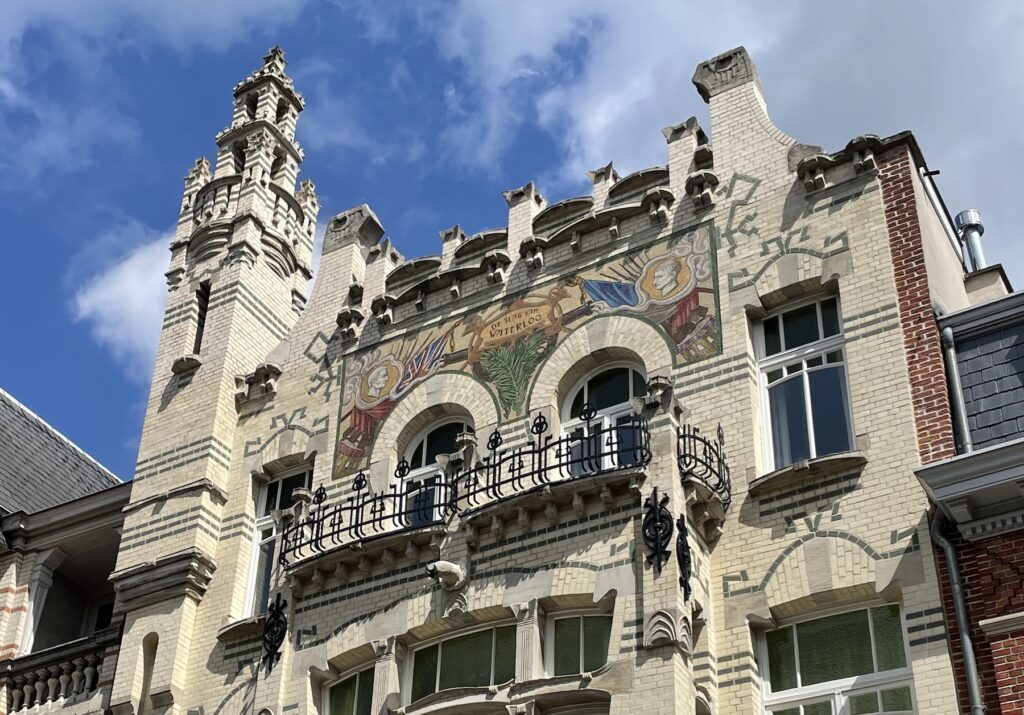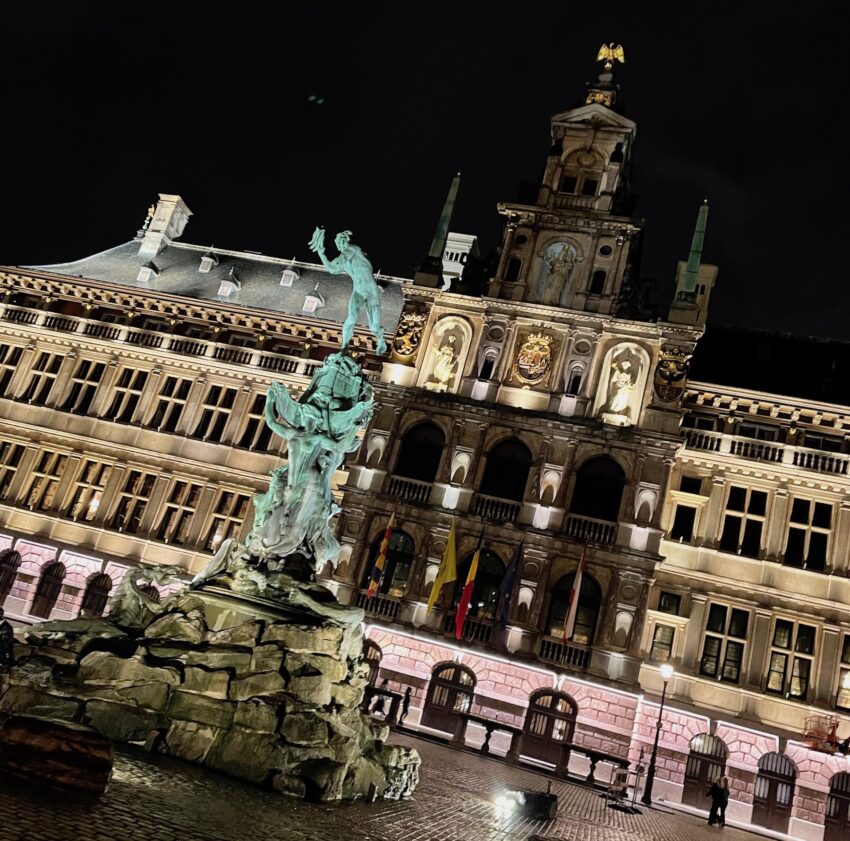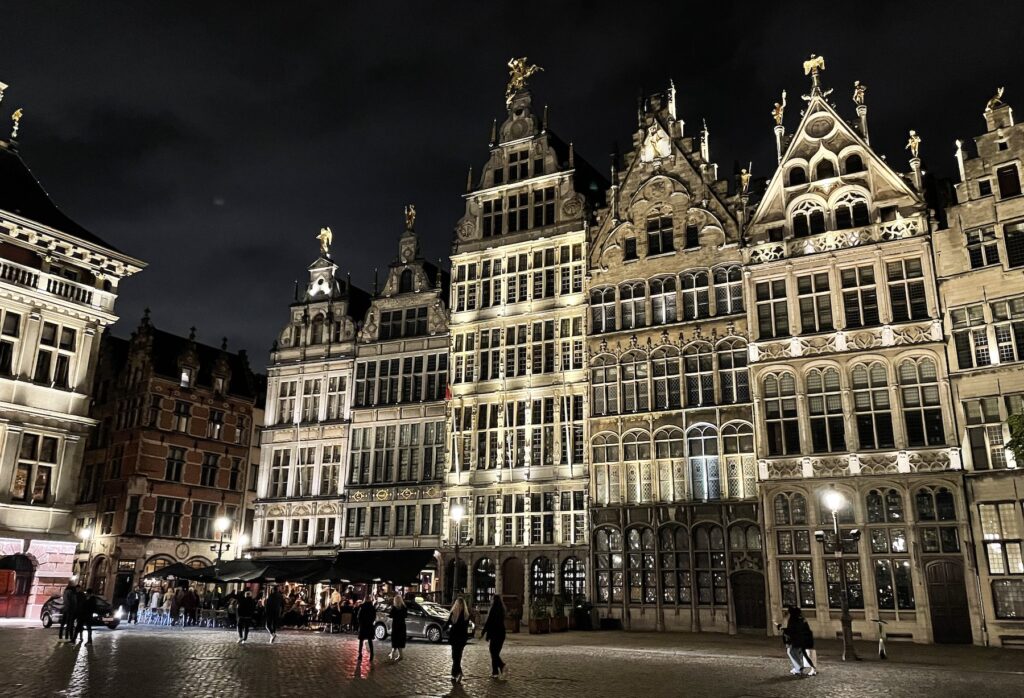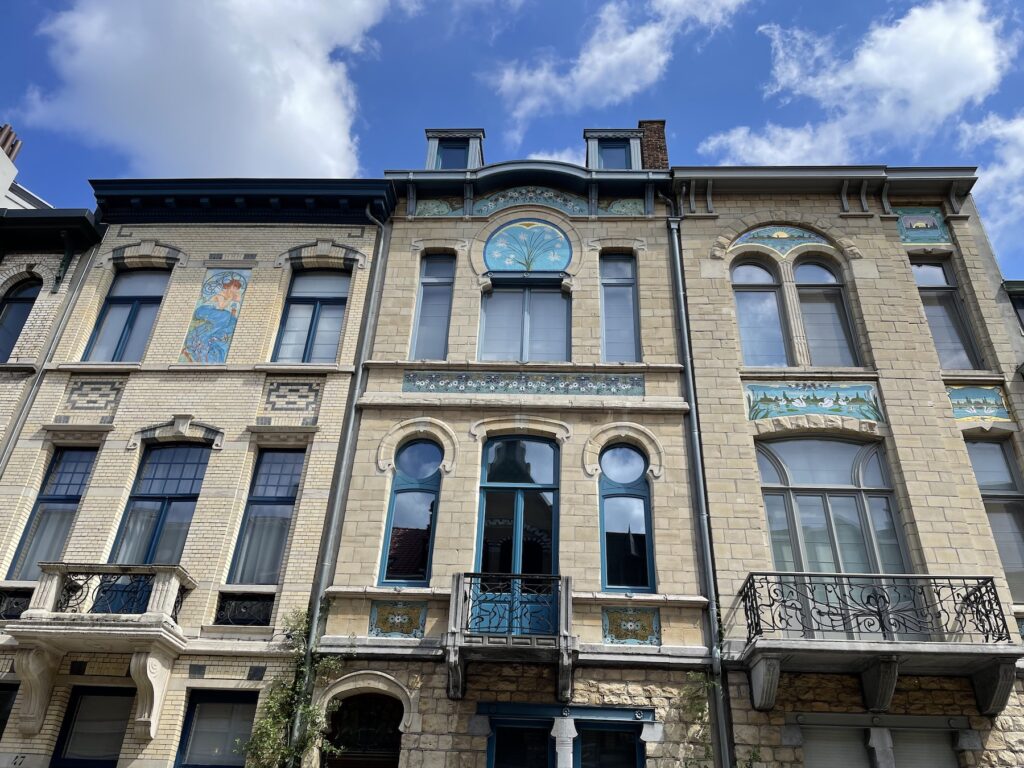Antwerp is a feast for the eyes if, like me, you’re a fan of great architecture. And its bars and restaurants are pretty good too.
The Belgian city lies on the River Scheldt, remains a bustling port and has long been at the heart of the diamond trade. It’s a great place to spend a couple of days and is compact enough to explore on foot. It’s also famous for the Rubenshuis, once home to the Flemish artist Peter Paul Rubens; but, as tends to happen with us when we’re visiting a city, it was closed for renovations.
Like the country’s capital Brussels, Antwerp has a medieval heart and an eye-catching, pedestrianised Grote Markt, or market square, that’s lined with towering and ornately decorated guildhalls that were home to the city’s various trade associations. A 16th century town hall dominates the space and overlooks the outlandish Brabo fountain (pictured top), named after the city’s legendary founder who’s depicted dramatically throwing the severed hand of a giant into the Scheldt. Sadly, the Grote Markt and its surroundings are marred somewhat by a string of low-rent bars and restaurants that spill out onto the pavement – a curse that afflicts popular tourists spots the world over. The best places to eat and drink are well away from the square, often in the streets that spiral away from the handsome Gothic cathedral.
Older than the market place by several centuries is Het Steen, a modest castle on the river that dates from the 13th century. Built on the oldest settled part of Antwerp, it’s the city’s oldest building – although much renovated over the years – and has some good views from its rooftop. To the north lies the bulk of the modern port and the dramatic 21st century Zaha Hadid-designed port authority HQ. We stopped at one of the floors of Het Steen to peruse The Antwerp Story, a newish and very good exhibit that (not surprisingly) tells the story of the city in a modern and engaging way.
No exploration of Antwerp’s architecture can miss out the neo-Gothic facade of the Antwerpen-Centraal station, which was completed in 1905. It must rank as one of the best railway stations in Europe, has an expansive train shed and a glorious dome. We stood inside for some time taking in all the flourishes and extravagances that must make it a treat on a daily basis for commuters.
We walked on to Zurenborg, a district that has some of the best art nouveau architecture in the city as well as some popular and trendy cafes and boutiques. Most of the best properties were built at the end of the 19th and in the first few years of the 20th centuries, and some of the best can be found on the Cogels-Osylei. We took a wander down it, gawping at the properties and pondering how much they’d cost today. It’s not all art nouveau though. Some homes were built in the Gothic Revival style, a few in the neoclassical.

While some properties in the district are unique, others were built as a group to fit a particular theme. We diverted on to Waterloostraat to find one set based on times of the day, while at the junction with General Merlenstraat were four houses reflecting the four seasons – one at each corner. Other properties were named The Tulip and The Rose after the decoration that adorns their frontages. The list goes on…
Zurenborg is one of those districts where failing to look up can result in missing something truly glorious.




